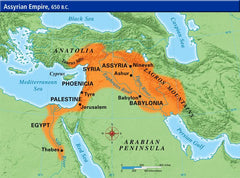Your cart is empty now.
Baptism Now Saves Us: An Assured Conscience
So what is the status of a baptized person in the Roman Catholic Church? His sins have been removed, but “concupiscence” remains. In Roman Catholicism, concupiscence is a moral weakness, a tendency toward sin, which is itself not sin and which can be resisted by grace (grace that God gives to everyone through the sacraments and through the good works of piety of a faithful church member). But the Bible teaches that all sinners (even believers) have a sinful flesh, a totally depraved and corrupted nature, which is not only inclined to all evil, but is itself evil, and which can do nothing good. This sinful nature exists in all sinners, although in believers it has been dethroned. Nevertheless, even in believers the flesh is still very active and produces in us all kinds of evil. Without a biblical understanding of sin, the Roman Catholic will lack a proper understanding of salvation: neither water baptism nor the power of free will (even when coupled with God’s grace) can deliver us from the “filth of the flesh.”
Why then does the Bible speak this way, linking the reality of salvation to the sign of baptism? Reformed theologians speak of the sacramental union, for in the Bible there is a close connection between the sign (baptism) and the thing signified (the washing away of sin in the blood of Christ). The Heidelberg Catechism asks about this sacramental union, “Why then doth the Holy Ghost call baptism ‘the washing of regeneration,’ and the ‘washing away of sins’? God speaks thus not without great cause, to wit, not only thereby to teach us that, as the filth of the body is purged away by water, so our sins are removed by the blood and Spirit of Jesus Christ; but especially that by this divine pledge and sign he may assure us that we are spiritually cleansed from our sins as really as we are externally washed with water” (Q&A 73).
The relationship between the sign (baptism) and the thing signified (salvation) is not one of identity. They are not the same, nor does the sign become the reality. A sign cannot be the reality; otherwise, it is not a sign. A sign cannot become the reality, otherwise it ceases to be a sign. Nevertheless, sometimes the Bible gives the name of the thing signified to the sign itself, because God would have us associate the reality with the sign.











